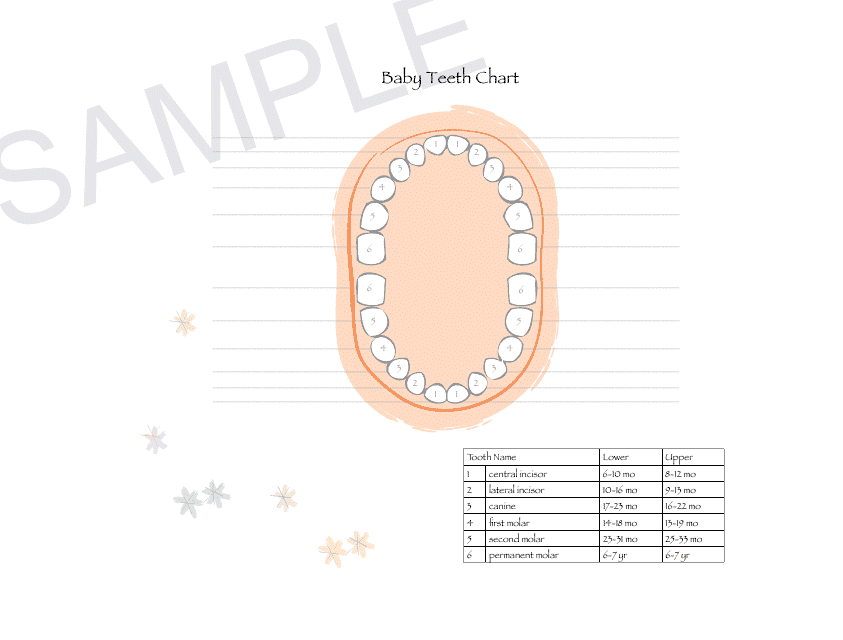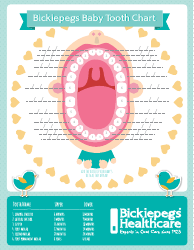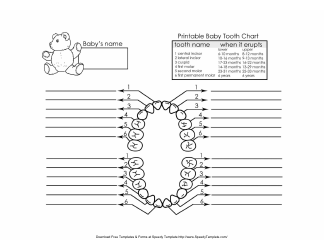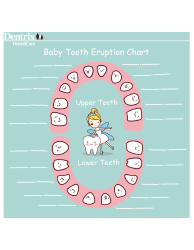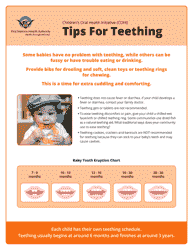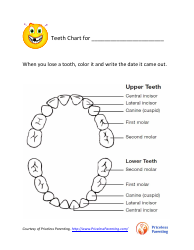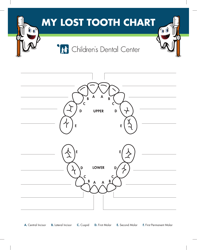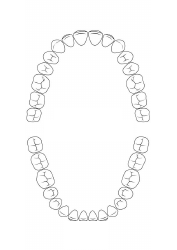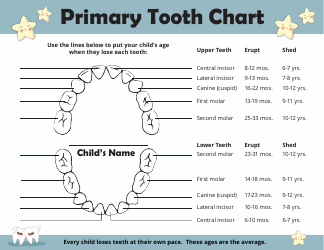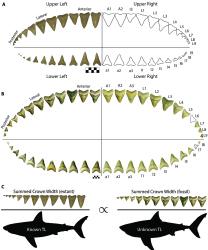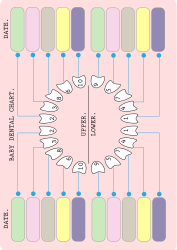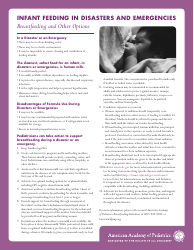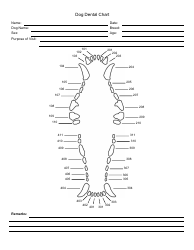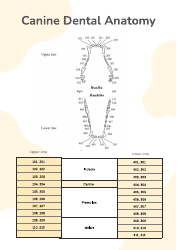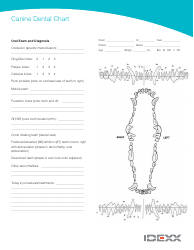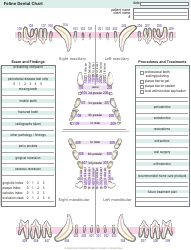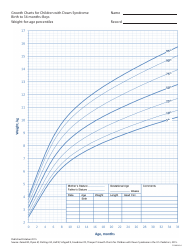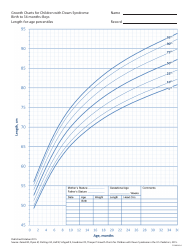Baby Teeth Chart
The Baby Teeth Chart is a visual representation of the order in which a child's baby teeth typically erupt and fall out. It helps parents and dental professionals track the growth and development of a child's teeth.
The baby teeth chart is typically filled by the parents or guardians of the child.
FAQ
Q: What is a baby teeth chart?
A: A baby teeth chart is a visual representation of the order in which a child's teeth typically erupt and shed.
Q: How many teeth are in a baby teeth chart?
A: A baby teeth chart includes 20 primary teeth, also known as baby teeth or deciduous teeth.
Q: What are the different types of teeth in a baby teeth chart?
A: A baby teeth chart includes incisors, canines, and molars.
Q: When do the first baby teeth typically appear?
A: The first baby teeth, usually the lower central incisors, typically appear around 6 to 10 months of age.
Q: When do all of the baby teeth usually come in?
A: All 20 baby teeth are usually present by the age of 2 to 3 years.
Q: When do baby teeth begin to fall out?
A: Baby teeth usually begin to fall out around the age of 6 or 7 years, starting with the lower central incisors.
Q: Is it important to take care of baby teeth?
A: Yes, it is important to take care of baby teeth as they play a vital role in chewing, speech development, and creating space for permanent teeth.
Q: What can I do to keep my child's baby teeth healthy?
A: To keep baby teeth healthy, you should brush them twice a day with a soft toothbrush, use fluoride toothpaste, avoid sugary drinks and snacks, and schedule regular dental check-ups.
Q: Can baby teeth affect permanent teeth?
A: Yes, baby teeth can affect the development of permanent teeth. Premature loss of baby teeth or dental decay can cause problems for the permanent teeth.
Q: Do all children follow the same tooth eruption pattern?
A: While there is a general tooth eruption pattern, not all children follow it exactly. Some variation in timing is normal.
